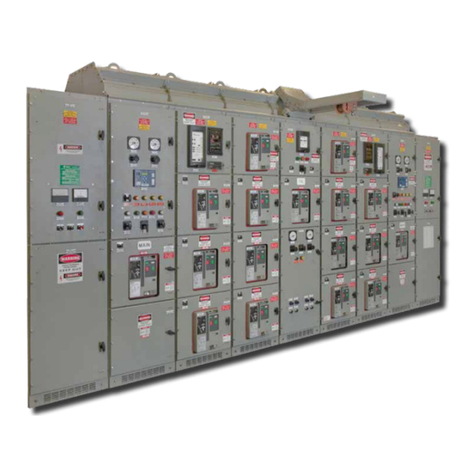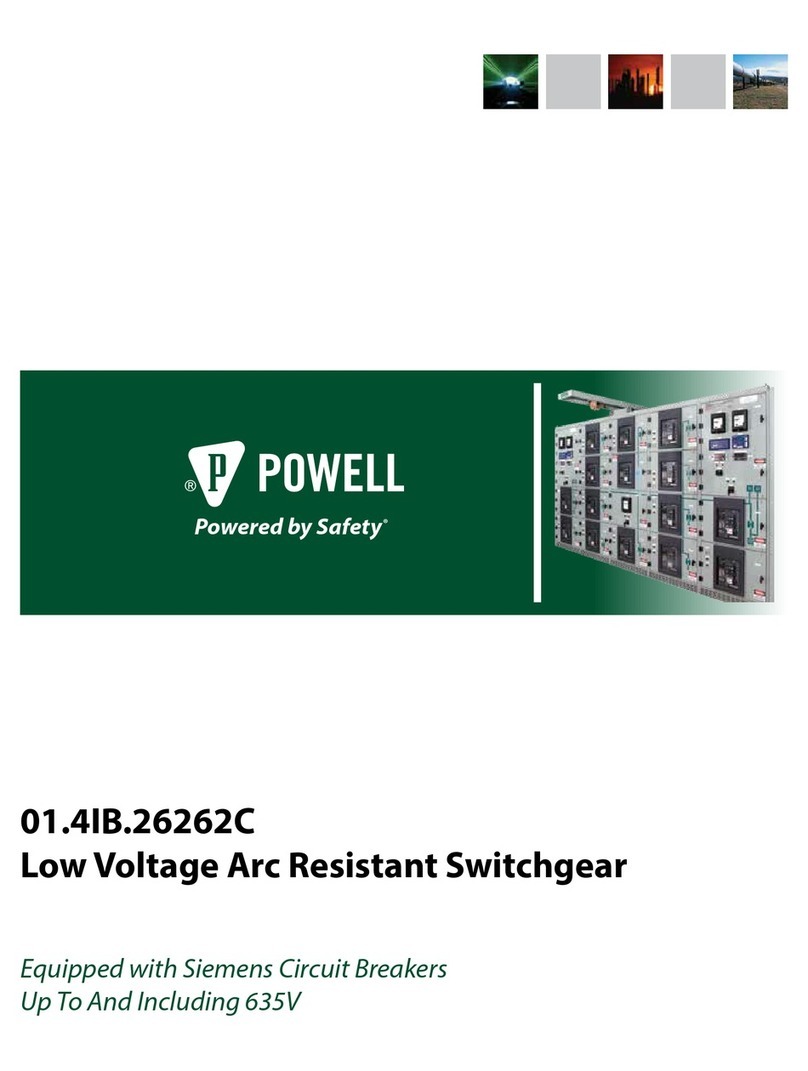
Powered by Safety®3
IB-26100Enclosed Indoor Disconnect Switch
II. SAFETY
A. SAFE WORK CONDITION
The information in Section A is quoted from NFPE
70E 2004 —Article 120 Page 120.1
Establishing an Electrically Safe Work Condition
120.1 Process of Achieving an Electrically Safe
Work Condition.
Determine all possible sources of electrical
supply to the specific equipment. Check
applicable up-to-date drawings, diagrams, and
identification tags.
After properly interrupting the load current,
OPEN the disconnecting device(s) for each
source.
Wherever possible, visually verify that all
blades of the disconnecting devices are fully
open or that drawout type circuit breakers are
withdrawn to the fully disconnected position.
Apply lockout/tagout devices in accordance
with a documented and established policy.
Use an adequately rated voltage detector to
test each phase conductor or circuit part to
verify they are deenergized. Test each phase
conductor or circuit part both phase-to-phase,
and phase-to-ground. Before and after each
test, determine that the voltage detector is
operating satisfactorily.
Where the possibility of induced voltages
or stored electrical energy exists, ground
the phase conductors or circuit parts before
touching them. Where it could be reasonably
anticipated that the conductors or circuit
parts being deenergized could contact other
exposed energized conductors or circuit parts,
apply ground connecting devices rated for the
available fault duty.
1.
2.
3.
4.
5.
6.
B. SAFETY RULES
Study this instruction bulletin and all other
associated documentation before uncrating
the PowlVac® 63kA 5000A Enclosed Indoor
Disconnect Switch.
Each user has the responsibility to instruct and
supervise all personnel associated with usage,
installation, operation, and maintenance of this
equipment on all safety procedures which must
be observed. Furthermore, each user has the
responsibility of devising a complete safety
program for each type of equipment encountered.
The enclosed indoor disconnect switch described
in this instruction bulletin is operated by high
energy mechanisms interlocked to provide specific
operating sequences. To ensure the safety of
personnel associated with usage, installation,
operation, and maintenance of this enclosed
indoor disconnect switch, it is mandatory that
the following safety rules be observed. THESE
RULES ARE NOT INTENDED TO BE A
COMPLETE SAFETY PROGRAM, BUT ARE
INTENDED TO COVER ONLY THE IMPORTANT
ASPECTS OF PERSONNEL SAFETY RELATED
TO POWLVAC® 63KA 5000A ENCLOSED
INDOOR DISCONNECT SWITCH.
1) General
Only supervised and qualified personnel
trained in the usage, installation, operation,
and maintenance of the enclosed indoor
disconnect switch shall be allowed to work
on this equipment. It is mandatory that this
instruction bulletin, any supplements, and
service advisories be studied, understood, and
followed.
Maintenance programs must be consistent with
both customer experience and manufacturer’s
recommendations, including service advisories
and the instruction bulletin(s). A well-planned
and executed routine maintenance program
is essential for enclosed indoor disconnect
switch reliability and safety.
1.
2.






























